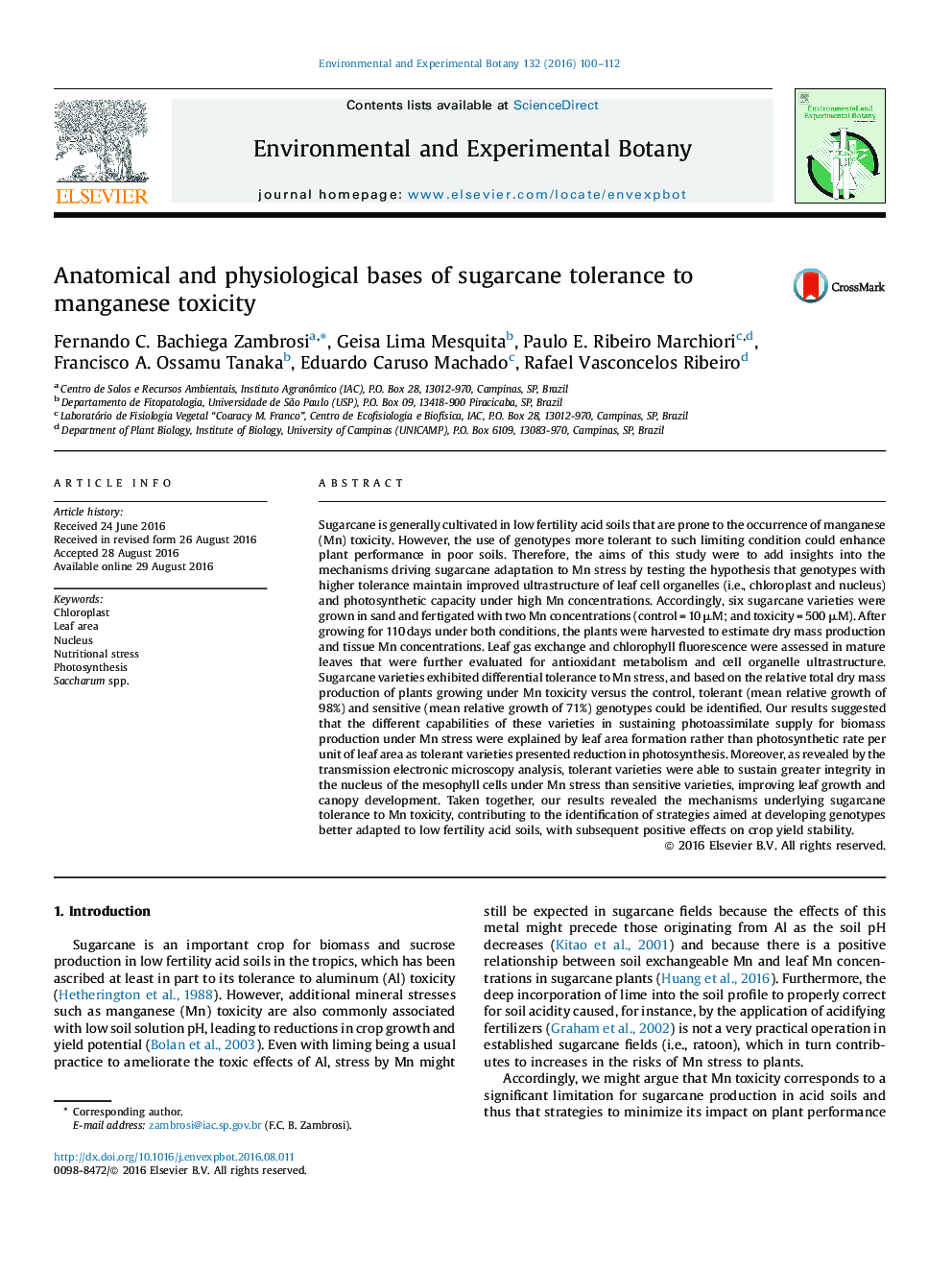| کد مقاله | کد نشریه | سال انتشار | مقاله انگلیسی | نسخه تمام متن |
|---|---|---|---|---|
| 4554049 | 1628045 | 2016 | 13 صفحه PDF | دانلود رایگان |

• Mn toxicity is a serious constraint to sustainable crop production in acid soils.
• Improved plant performance might be achieved with the use of more adapted genotypes.
• We investigated anatomical and physiological bases of sugarcane tolerance to toxic Mn.
• Tolerant varieties exhibited enhanced leaf growth and integrity of cell organelles.
• These results add insights into the traits underlying plant adaptation to Mn toxicity.
Sugarcane is generally cultivated in low fertility acid soils that are prone to the occurrence of manganese (Mn) toxicity. However, the use of genotypes more tolerant to such limiting condition could enhance plant performance in poor soils. Therefore, the aims of this study were to add insights into the mechanisms driving sugarcane adaptation to Mn stress by testing the hypothesis that genotypes with higher tolerance maintain improved ultrastructure of leaf cell organelles (i.e., chloroplast and nucleus) and photosynthetic capacity under high Mn concentrations. Accordingly, six sugarcane varieties were grown in sand and fertigated with two Mn concentrations (control = 10 μM; and toxicity = 500 μM). After growing for 110 days under both conditions, the plants were harvested to estimate dry mass production and tissue Mn concentrations. Leaf gas exchange and chlorophyll fluorescence were assessed in mature leaves that were further evaluated for antioxidant metabolism and cell organelle ultrastructure. Sugarcane varieties exhibited differential tolerance to Mn stress, and based on the relative total dry mass production of plants growing under Mn toxicity versus the control, tolerant (mean relative growth of 98%) and sensitive (mean relative growth of 71%) genotypes could be identified. Our results suggested that the different capabilities of these varieties in sustaining photoassimilate supply for biomass production under Mn stress were explained by leaf area formation rather than photosynthetic rate per unit of leaf area as tolerant varieties presented reduction in photosynthesis. Moreover, as revealed by the transmission electronic microscopy analysis, tolerant varieties were able to sustain greater integrity in the nucleus of the mesophyll cells under Mn stress than sensitive varieties, improving leaf growth and canopy development. Taken together, our results revealed the mechanisms underlying sugarcane tolerance to Mn toxicity, contributing to the identification of strategies aimed at developing genotypes better adapted to low fertility acid soils, with subsequent positive effects on crop yield stability.
Journal: Environmental and Experimental Botany - Volume 132, December 2016, Pages 100–112